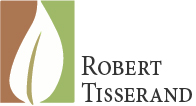Concern: Inhalation of toxic gases
Target of alert: Pregnant mothers
Introduction
One of the greatest health threats to an unborn child may come from a totally unexpected source. A CFSC (Campaign for Scaring Consumers) directive is currently being formulated to advise pregnant women not to change the diapers of their babies, or even be in the same room when a baby discharges body wastes.
After an extensive literature review, the CFSC is advising that there is a high risk of fetal toxicity following the mother’s inhalation of the chemicals occurring in feces and gastrointestinal tract gases, since these contain significant quantities of hydrogen sulfide, carbon dioxide, methane and ammonia. Once in the bloodstream, these gases pass with ease from the maternal blood circulation to that of the fetus. Their adverse effects have been documented as follows:
Hydrogen sulfide
An insidious, unforgiving and highly toxic gas that is heavier than air. At low concentrations it smells like rotten eggs, but at higher concentrations it deadens the sense of smell so that no odor can be detected, and it may cause dizziness, unconsciousness and death. It is both an irritant and asphyxiant. Locally, it irritates the mucous membranes of the eyes and respiratory tract.
Systemically, it affects the central nervous system and may inhibit the brain’s respiratory center, which is generally fatal. There is little experimental or human health data on long-term exposure to low concentrations of hydrogen sulfide (Beauchamp et al 1984). All reported human cases of acute hydrogen sulfide poisoning have arisen from inhalation exposure (Smith & Gosselin 1979).
Carbon dioxide
A completely odorless and tasteless (and therefore even more insidious) gas that is heavier than air. It displaces the oxygen supply in the bloodstream, and can thus cause unconsciousness and death.
 Methane
Methane
A capricious, unpopular and highly-strung gas that can create an explosive atmosphere. It also displaces oxygen.
Ammonia
A pernicious and unashamedly aggressive gas that is lighter than air. It has a pungent smell that is toxic in very high concentrations (Appelman et al 1982) and can irritate the eyes and respiratory tract (Petrova et al 2008). Ammonia also displaces oxygen in the bloodstream.
Toxic synergy
A combination of hydrogen sulfide and carbon dioxide (neurotic, bordering on psychopathic…) has been known to cause death from asphyxiation. Chronic exposure is associated with increased neurotoxicity and respiratory disease (Hansell & Oppenheimer 2004).
Discussion
Gases like hydrogen sulfide, carbon dioxide and methane are made by the breaking down of undigested food in the large intestine. Thus created in the deepest confines of the digestive tubery, these gases have to escape somehow. Most people release 1 to 3 pints a day, in an average of 14 “episodes”. Between 30% and 62% of healthy people produce methane. Most foods that contain carbohydrates (starches and sugars) can cause gas (Shahakian et al 2010). Feeding a baby with any form of milk is unwise, since it contains sugars, and is therefore likely to cause the baby to produce gases that may affect its unborn sibling.
Conclusion
The CFSCs expert advisers are acutely concerned over this problem, and urgently invite your comments before formulating appropriate legislation. In the meantime, pregnant mothers are advised to avoid exercise, naked flames and carbohydrate-containing foods, and/or to live apart from babies, young children or, as a precautionary measure, anyone else at all. Further information can be found in the CFSC’s Fetal Advisory Regulation Team Fatal Feco-Fetal Effluent Affliction Report (FARTFFFEAR).
References
Appelman LM, Ten Berge WF, Reuzel PG 1982 Acute inhalation toxicity study of ammonia in rats with variable exposure periods. American Industrial Hygiene Association Journal 43:662-665
Beauchamp et al 1984 A critical review of the literature on hydrogen sulfide toxicity. Critical Reviews in Toxicology 13(1): 25-9
Hansell A, Oppenheimer C 2004 Health hazards from volcanic gases: a systematic literature review. Archives of Environmental Health 9: 628-639
Petrova M, Diamond J, Schuster B et al 2008 Evaluation of trigeminal sensitivity to ammonia in asthmatics and healthy human volunteers. Inhalation toxicology 20:1085-109
Sahakian AB, Jee SR, Pimentel M 2010 Methane and the gastrointestinal tract. Digestive Diseases & Sciences 55:2135-2143
Smith RP, Gosselin RE 1979 Hydrogen sulfide poisoning. Journal of Occupational Medicine, 21: 93-97
Post-script
Some possibly tasteless light relief in the midst of heavy wrangling about the safety or otherwise of cosmetics (see my previous blog). Let me add that I am very concerned to hear that all kinds of nasty toxic chemicals have been found in the cord blood of babies by the Environmental Working Group. Let me also add that, with the exception of lead (naturally present in the iron oxides used to make lipstick red) and synthetic musk compounds, none of the 15 chemicals listed by the EWG is likely to be either found in or derived from cosmetics.


That is scary Robert, and not to mention the high levels of toxic bacteria that people are exposed to through diapers. Glad my boys are out of that stage now.
What about those old folks, who belch, fart, sneeze and snicker unexpectedly. Surely they must now be kept away from pregnant women and babies. Ban All Grandparents (BAG)!!! Join BAG now to protect unborn babies. (Ad paid for by unknown corporations; send your large donation now to avert this pending disaster.) 😀
oh please pregnant woman have been changing baby’s for centuries now suddenly its toxic? sounds more like an excuse for someone else to change there kids diapers… next thing we know it will be mandatory for all pregnant woman to have nanny’s seriously people need to get a grip and get a life.
Robert,
This is a great example of the absurd scares created by The Environmental Working (Worrying) Group and The Campaign for Safe Cosmetics (or Campaign to Scare Consumers).
Personally I’m all for it!
I think we should have governement issued baby nappy changers…preferably male as there is no danger that they might unknowingly be pregnant.
This warning is very timely following the newest research into the dangers of di-hydrogen monoxide. Which has been found to be extremely hazardous in high doses and is present in large quantities in many foods, plants and animals.
Sounds like the members of the CFSC have been sniffing too many of their own fumes. I wonder what they think of the fact that the unborn fetus urinates into its own amniotic fluid (GASP!!). Imagine the skin irritation that could result! We MUST stop intrauterine urination altogether!!!
Um, Tina – chill. This was very much a tongue in cheek article, designed (I imagine) to show how absurd information is when taken out of context, and when people don’t stop and THINK. Please don’t take it as a serious recommendation.
(yes, I know I’m late replying to Tina – just got here!)
Hi Robert,
I found that I let off a lot more wind when I was pregnant…should I have run out of the room every time I let one off? Oh no, was I intoxicating my unborn baby when I inadverantly farted during sleep! The contents of the article can not be serious – surely? Great blogs by the way.
Rebecca
Brilliant post, Robert. Many years ago I worked with a boss who had a habit of breaking wind just as the lift doors closed, thereby trapping me in with his noxious fumes. Do you think the CFSC would assist me in legal action against him?
I love it! Lol. Got a good laugh today.